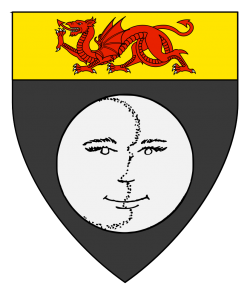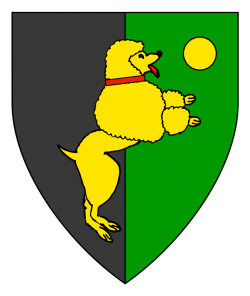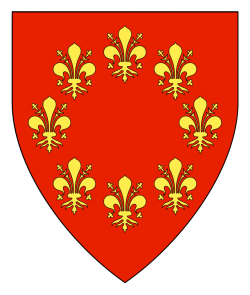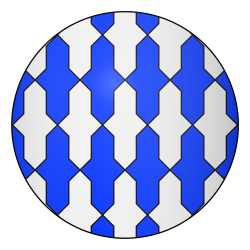I recently consulted with our provincial seneschal to prepare a submission for a member of his household.
Sable, an eagle Or, orbed, langued, and armed argent, and on a chief Or three lozenges ployé gules.
Josef knew he wanted his arms to include an eagle as a nod to the arms of his knight, and wanted a chief with a set of three charges that would reference his hometown football team, the Steelers, and their stadium, formerly known as Three Rivers. The lozenge ployé, sometimes blazoned an “Arabic napkin,” comes directly from the team’s logo.
Continue reading “Name and Arms for Josef von Ulm”




